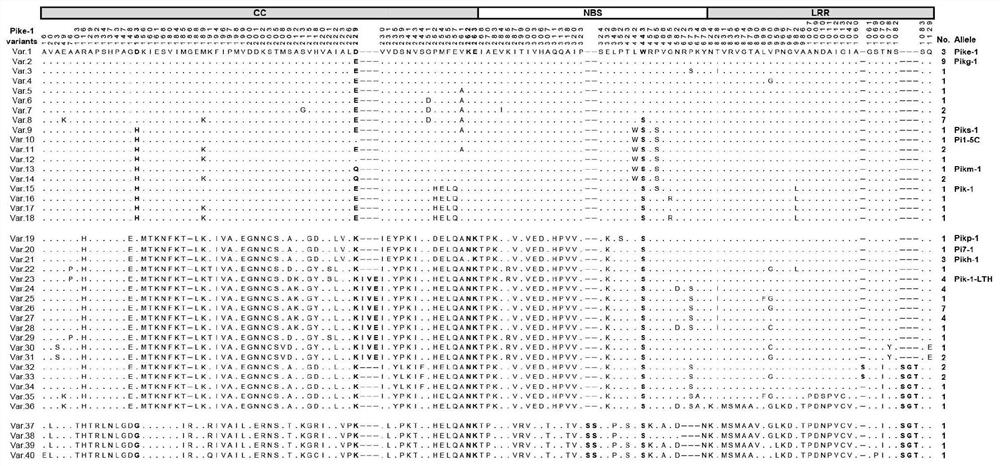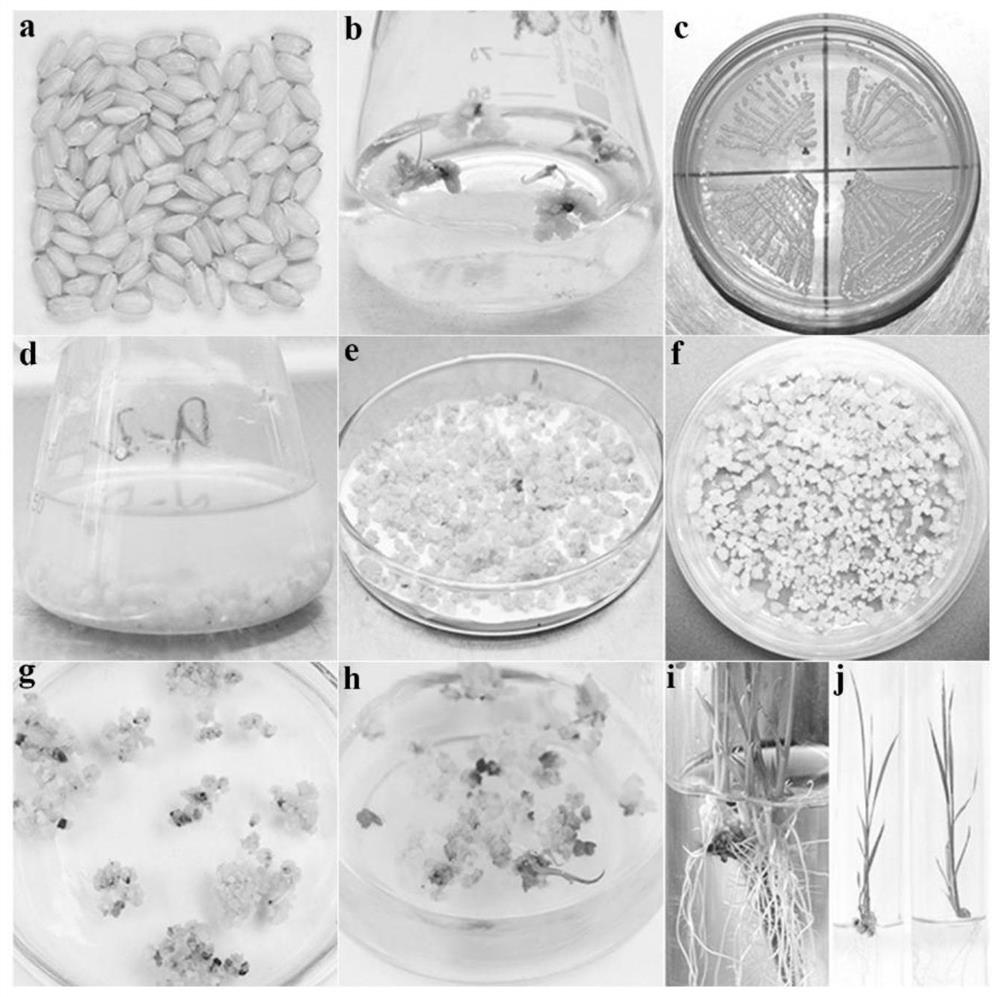Rice blast resistance gene Pikg, encoding protein and application thereof
A rice blast and resistance gene technology, applied in the field of rice disease-resistant breeding, can solve problems such as unfavorable sustainable development and environmental pollution, and achieve the effects of shortening the period of variety improvement, broadening resistance, and overcoming chain burden
- Summary
- Abstract
- Description
- Claims
- Application Information
AI Technical Summary
Problems solved by technology
Method used
Image
Examples
Embodiment 1
[0028] Example 1 Obtaining of rice blast resistance gene Pikg
[0029] The invention utilizes the homologous cloning method to clone the rice blast resistance gene Pikg. In order to excavate and identify new alleles of the rice blast resistance gene Pik, the present invention utilizes the sequences of two constituent genes Pik-1 and Pik-2 of Pik (NCBI accession number: HM048900) as templates to design and amplify the Pik- 1 and Pik-2 exon fragment primers ( figure 1 ,Table 1). Since some studies have shown that Pik-1 can directly bind to rice blast avirulent protein AvrPik-D, and the nucleotide sequence of Pik-2 is relatively conservative, the present invention first selects 3 pairs of primers Ex1 that specifically amplify the exon of Pik-1 -F / R, Ex2-F / R, Ex3-F / R( figure 1 a, 1b), using 79 parts of rice leaf genomic DNA as a template (Table 1), the high-fidelity polymerase KOD enzyme was used to carry out PCR amplification, and the PCR product was detected by electrophoresi...
Embodiment 2
[0037] Example 2 Transplantation of Pikg rice plants and gene function verification
[0038] Since the nucleotide sequences of Pikg-2 and Pike-2 are exactly the same, the present invention connects the DNA fragment of the Pikg-1 coding region with the binary transformation vector pRGV to construct the vector pRGV-Pikg-1, and then transforms the Nipponbare containing Pike-2 Callus, the specific operation is as follows:
[0039] The mature seeds of the Pike-2 transgenic plant Nip-Pike-2 constructed on the background of Nipponbare were used to induce callus on the induction medium, and the EHA105 strain carrying the vector pRGV-Pikg-1 was shaken at 28°C until OD 600 When the value is 0.5-0.6, immerse the rice callus in the bacterial solution for 30 minutes, blot the bacterial solution on the surface of the callus and transfer the callus to the co-cultivation medium for 2-3 days in the dark at 19-22°C . The co-cultured calli were taken out, washed with sterilized deionized water...
Embodiment 3
[0040] Example 3 Resistance characteristics of rice blast resistance gene Pikg
[0041] First of all, in order to compare and clarify whether there are differences in the resistance spectra of the 7 alleles cloned at the Pikg and Pik sites in the present invention, the present invention selected the rice blast strains susceptible to Nipponbare and Lijiang Xintuan black valley Anti-spectrum analysis, these strains originated from Heilongjiang (HLJ), Jiangxi (NC), Hunan (HN) and Hubei (HB) (Table 5). Transgenic plants Nip-Pike (Pike) and Nip-Pikg (Pikg) with Nipponbare as genetic background and monogenic lines IRBLkm-Ts (Pikm), IRBL-CL (Pi1), IRBLks with Lijiang Xintuan Heigu as background -S (Piks), IRBLk-Ka (Pik), IRBLkp-K60 (Pikp) and IRBLkh-K3 (Pikh) were used for resistance identification. Greenhouse spray inoculation identification found that the disease resistance frequency of Pikg was different from the other 7 alleles (Pike, Pik, Pikh, Pikm, Pikp, Piks, Pi1) on the Pik...
PUM
 Login to View More
Login to View More Abstract
Description
Claims
Application Information
 Login to View More
Login to View More - R&D
- Intellectual Property
- Life Sciences
- Materials
- Tech Scout
- Unparalleled Data Quality
- Higher Quality Content
- 60% Fewer Hallucinations
Browse by: Latest US Patents, China's latest patents, Technical Efficacy Thesaurus, Application Domain, Technology Topic, Popular Technical Reports.
© 2025 PatSnap. All rights reserved.Legal|Privacy policy|Modern Slavery Act Transparency Statement|Sitemap|About US| Contact US: help@patsnap.com



